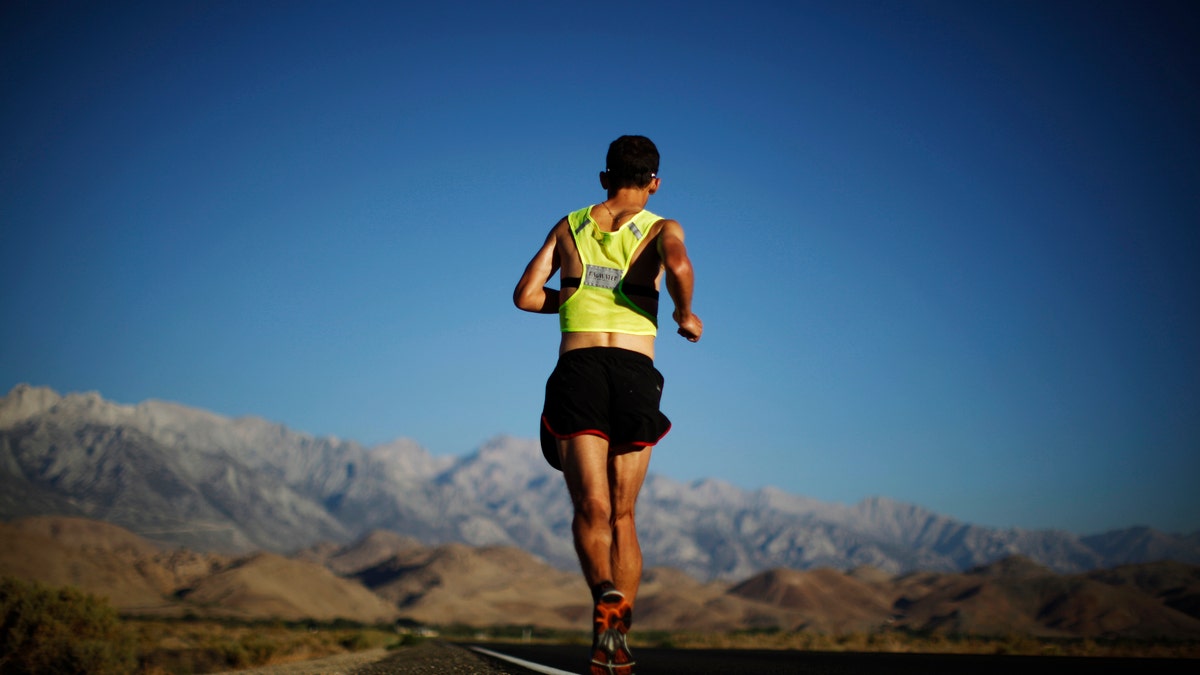
(REUTERS/Lucy Nicholson)
Ultramarathoners who apply common, inexpensive paper tape to their feet before a race get fewer blisters on those areas than on non-taped areas, according to a new study.
Blisters can happen to anyone, including casual joggers, people training for a charity walk, backpackers, and those wearing a new pair of dress shoes or football cleats, said lead author Dr. Grant S. Lipman of Stanford University School of Medicine in California.
"Blisters have been found to be the most common reason to adversely affect performance in ultramarathons, cause temporary duty restrictions in about 20 percent of active duty military personnel with them, and I've even had a runner wind up in the intensive care unit with severe sepsis and almost lose his leg from a blister," Lipman told Reuters Health by email.
"So blisters are an important issue to just about everyone, and pre-taping your blister prone areas before an outing may make the difference on whether or not you can enjoy (or complete) your next adventure," he said.
The researchers studied 128 runners participating in a six-stage 155-mile ultramarathon in 2014, with sections in Jordan and Madagascar. Each runner had one foot taped by a trained medical assistant who taped areas that were prone to blisters in the past or taped random areas if the runner did not usually get blisters.
Each runner got a single layer of tape before the race which was reapplied before each race stage. The 155-mile race took seven days to complete.
While 30 runners developed blisters on the taped area of the foot, 81 developed blisters on untaped areas.
In a previous trial, Lipman compared the taped to the untaped foot, and the tape did not appear to be effective, but that may be because the right and left foot have unique topography, he said.
Blisters form from resistance or friction on the skin, when repeated rubbing causes shear stress on the superficial cells in the skin, he said.
"Paper tape is a very smooth thin tape, it causes easier sliding at the skin interface so likely decreases the shear stress under the tape," he said. "Also, it does not have a very strong adhesive quality so if a blister does form under the tape, pulling the tape off will not rip off the 'roof' of a blister."
"'Deroofing' a blister," he added, leaves "an open wound that is both painful and potentially a source of infection."
The tape is cheap and very common over the counter in most drugstores, he said.
"It's rare that people have serious health consequences as a result of blisters, but it does happen," said Dr. Martin Hoffman of the VA Northern California Health Care System, who was not part of the new study.
Paper tape "wouldn't be my first line approach," Hoffman told Reuters Health by phone.
"I would recommend that people train appropriately, have shoes that fit appropriately, and file down calluses first," he said. Calluses create pressure points that can make blisters worse.
It's also important to keep your feet dry, he said.
"I would recommend pre-taping to anyone who gets blisters," Lipman said.
"Paper tape is hypoallergenic, and in treating (thousands) of ultra runners over the last ten years I have never seen or heard of an allergic reaction to it," he said. "That being said, if you do have an allergy to either the adhesive or the material of paper tape, you should check with your doctor before using it."
